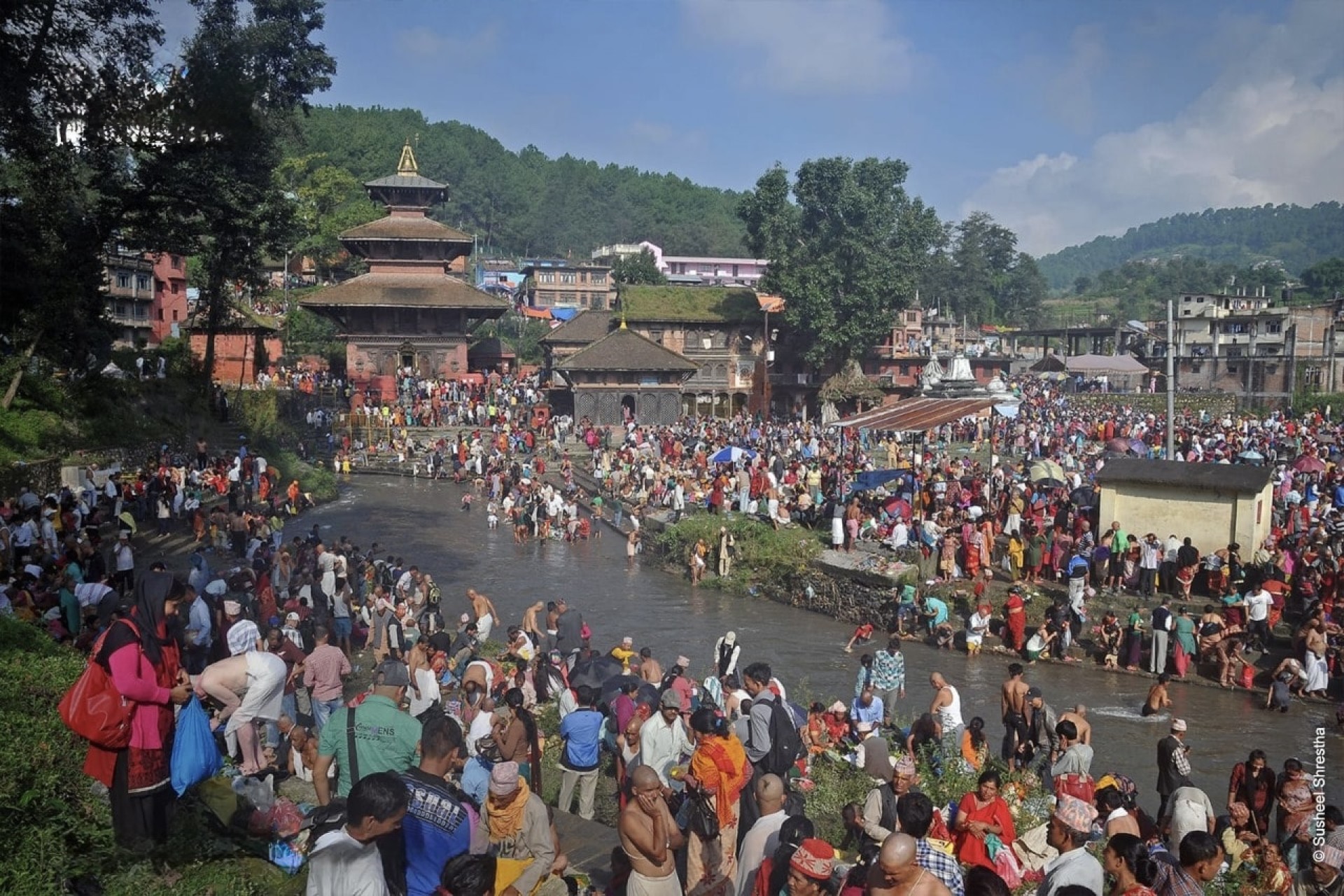-
Places to go
-
Things to do
-
Adventure
Nature
Culture
Wellness
Others
-
-
Festivals & Events
-
Festivals
Event Calendar
-
-
Plan Your Trip
-
Trip Ideas
Travel Details
Book Your Trip
-
- Travel Updates
Top 5 Shiva Temples in Kathmandu Valley
Top 5 Shiva Temples in Kathmandu Valley
Kathmandu Valley is known for its deep reverence for Lord Shiva, with numerous temples offering a serene and spiritual experience. For visitors, exploring these sacred sites provides an opportunity to immerse in the valley's rich cultural and religious heritage, while also enjoying moments of peace and reflection. A visit to these temples is a must for anyone seeking to connect with the divine energy of Lord Shiva.
1. Pashupatinath
Pashupatinath Temple is one of Nepal’s most revered Hindu temples and a major Shiva shrine worldwide. A UNESCO World Cultural Heritage Site, this ancient temple in Gaushala, Kathmandu, is believed to be over two thousand years old. Its stunning pagoda-style architecture and sacred ambiance attract thousands of devotees and tourists. Situated on the banks of the holy Bagmati River, it is a key pilgrimage site, especially during Maha Shivaratri.
Dedicated to Lord Pashupati, an incarnation of Shiva, the temple represents one of the eight Rudras and is associated with fire. The deity has five faces, each symbolizing a different form of Shiva: Sadyojata (west), Vamdeva (north), Tatpurusha (east), Aghor (south), and Ishana (zenith). The vast temple complex houses 559 Shiva shrines, making it a deeply spiritual and architecturally rich site.
-1740485024_resized1920.jpg)
2. Gokarneshwar Mahadev
Gokarneshwar Mahadev Temple, located in Gokarna, is dedicated to Lord Shiva in his Mahadev form. Surrounded by lush greenery, it is a peaceful and significant pilgrimage site. The temple is especially known for its association with Hindu rituals performed in honor of deceased ancestors, making it a sacred destination for devotees.
According to legend, Lord Shiva once roamed the Gokarna forests in the form of a deer. When the gods recognized him and tried to capture him, his horn broke into three pieces. The spot where Lord Brahma buried these fragments is where the temple now stands. An inscription at the temple, which was rebuilt in 1582 AD by Gopiran Bharo, suggests that the site held spiritual importance even before the Lichhavi period. Every year, devotees visit on Gokarna Aunsi, around September, to pay tribute to their fathers.

3. Doleshwar Mahadev
Doleshwar Mahadev Temple, located in Bhaktapur, is believed to be the missing head of the Kedarnath Temple in India. With deep spiritual ties to the Mahabharata, the temple is linked to the Pandavas' journey seeking Lord Shiva’s blessings. Recently renovated, it has become a popular pilgrimage site for both locals and international devotees.
Situated about 20 km from Kathmandu, Doleshwar Mahadev is approximately a 30-minute drive from the city. Shiva devotees believe that a pilgrimage to Kedarnath is incomplete without visiting Doleshwar Mahadev and Pashupatinath. It is said that visiting these three sacred sites cleanses one of past sins, making this temple an essential part of Shiva worship.
-1740484775_resized1920.jpg)
4. Santaneshwar Mahadev
Santaneshwar Mahadev Temple, located in Jharuwarasi, Lalitpur, is a revered Shiva temple known for its association with fertility and the blessing of children. According to legend, when Lord Shiva wandered in grief carrying the body of Sati, her breast fell on the hill where this temple now stands. Devotees believe that couples struggling to conceive can receive Lord Shiva’s blessings by offering prayers here.
The temple features traditional Nepali-style architecture and is surrounded by lush greenery, creating a peaceful atmosphere for meditation and worship. It is especially lively during Maha Shivaratri and Teej, when devotees gather to celebrate and seek divine blessings. The serene environment makes it a sacred retreat for spiritual seekers and pilgrims alike.
-1740484778_resized1920.jpg)
5. Kailashnath Mahadev
Situated in Sanga, on the outskirts of the Kathmandu Valley, Kailashnath Mahadev also known as Sanga Shiva is the world's tallest Shiva statue, standing at an impressive 143 feet. Inaugurated on June 21, 2010, this grand structure is the tallest Shiva idol in Asia. The statue itself measures 108 feet, a number of great significance in Hindu mythology. Spanning 400,000 square feet, the temple complex includes a resort, spa, yoga center, health club, and meditation facility, making it a peaceful retreat for visitors.
Located about 20 kilometers from Kathmandu, the temple is easily accessible by road. The scenic drive passes through lush landscapes and traditional villages. Perched on a hilltop, it offers stunning views of the valley, creating a perfect setting for meditation and relaxation. Visitors can explore the well-maintained premises, enjoy local cuisine, and take in breathtaking scenery. Whether you're a devotee or a traveler, Kailashnath Mahadev is a must-visit for its spiritual, architectural, and natural beauty.
Nepal Tourism Board is a national tourism organization of Nepal established in 1998 by an Act of Parliament in the form of partnership between the Government of Nepal and private sector tourism industry to develop and market Nepal as an attractive tourist destination. The Board provides platform for vision-drawn leadership for Nepal’s tourism sector by integrating Government commitment with the dynamism of private sector.



